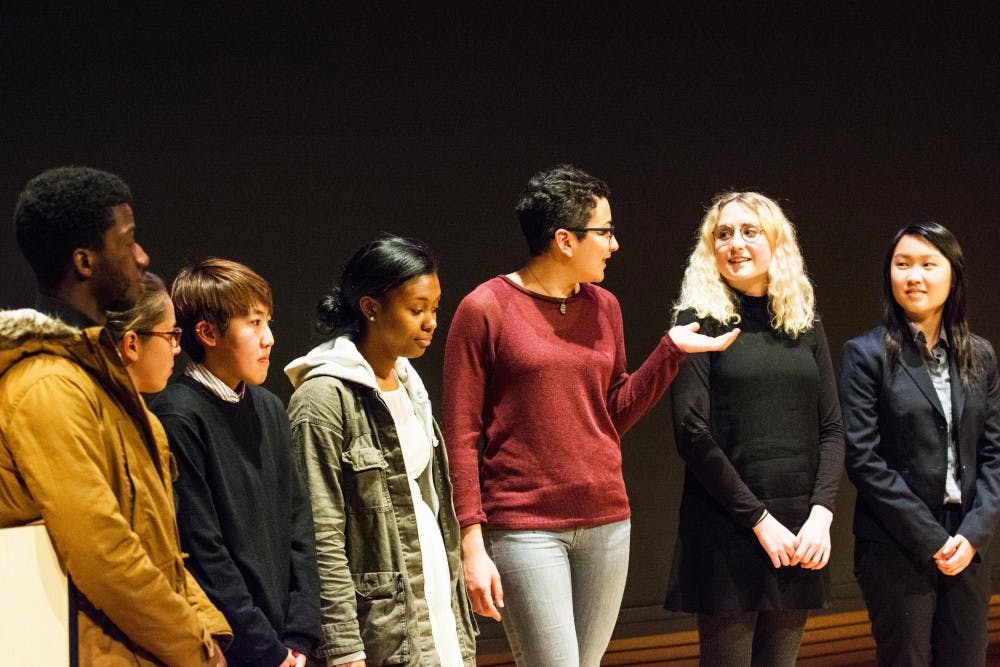Celebrating its annual DNA Day, SciToons, a University initiative, presented three videos Monday celebrating the wonders of the double helix in the Granoff Center for the Arts.
SciToons is a program “combining art, animation, high-quality multimedia and storytelling to engage a broader audience in science,” said Oludurotimi Adetunji, associate dean for undergraduate research and inclusive science. Also known as the Science Cartoon Program, the project brings students and faculty members together to create informative animated videos about science, technology, engineering and mathematics concepts for the general public.
The event was part of national DNA Day celebrations, hosted by the National Human Genome Research Institute. DNA Day is usually held in April to commemorate both the discovery of DNA in 1953 and the completion of the Human Genome Project in 2003. The institute collaborates with universities and organizations to help “students, teachers and the public … learn more about genetics and genomics,” according to its website.
SciToon teams screened informative clips discussing a wide variety of concepts related to DNA, from the nature of genetic disease to the function of the human microbiome. With colorful animation, music and humor, the projects explained complex biological concepts such as genomic exon splicing to an audience unfamiliar with the science.
Each video was scripted and animated by students whose concentrations and interests branched much further than the topics the videos covered. Only a few of the student presenters are biology majors. The bulk of the presenters concentrate in computer science, visual arts and other subjects.
Each video was preceded by a small talk from STEM experts within the University faculty. Associate Professor of Biology Mark Johnson brought in his children for a side-by side comparison of the genetic mutation that leads to red hair. Johnson applauded the audience range for which the SciToon movies were optimized. “My grandmother, my kids — I think everyone will get something different from these videos,” he said.
Adetunji, who served as the executive producer for each video, agreed. “In general, scientists do a terrible job of talking with the public, and I think that’s a major impetus to these projects,” he said.
Each video begins as an idea presented by a student or faculty member, Adetunji said. With “interactive feedback” between experts and students, the team produces a script, voiceover and animation for the project. Creating content for the general public is tough; Adetunji said each project requires five to seven rewrites and six months of work at the very least before it is finished.
As a result, the completed videos are polished and professional, multiple audience members in attendance said. The SciToons channel, which published all clips, receives on average 1,000 views a week, Adetunji said. One of the most popular videos, “How Do We See Color,” has over 75,000 views. While the event covered only biological topics, the project teams are always looking for new and exciting topics to cover, he added.
Students who worked on videos were given the opportunity at the end of video presentations to lead behind-the-scenes discussions about the process. Margaret Barry ’18, a Rhode Island School of Design dual-degree student, and Lorraine Salim ’17 talked about the collaboration needed to create a cohesive video. When asked by audience members about the style of the visual art, Barry gave an in-depth look at the processes around the animation, including using Adobe After Effects and working with faculty members to ensure proper understanding of the topic. Several students also discussed interest in exploring different animation styles, such as claymation, in the future.





